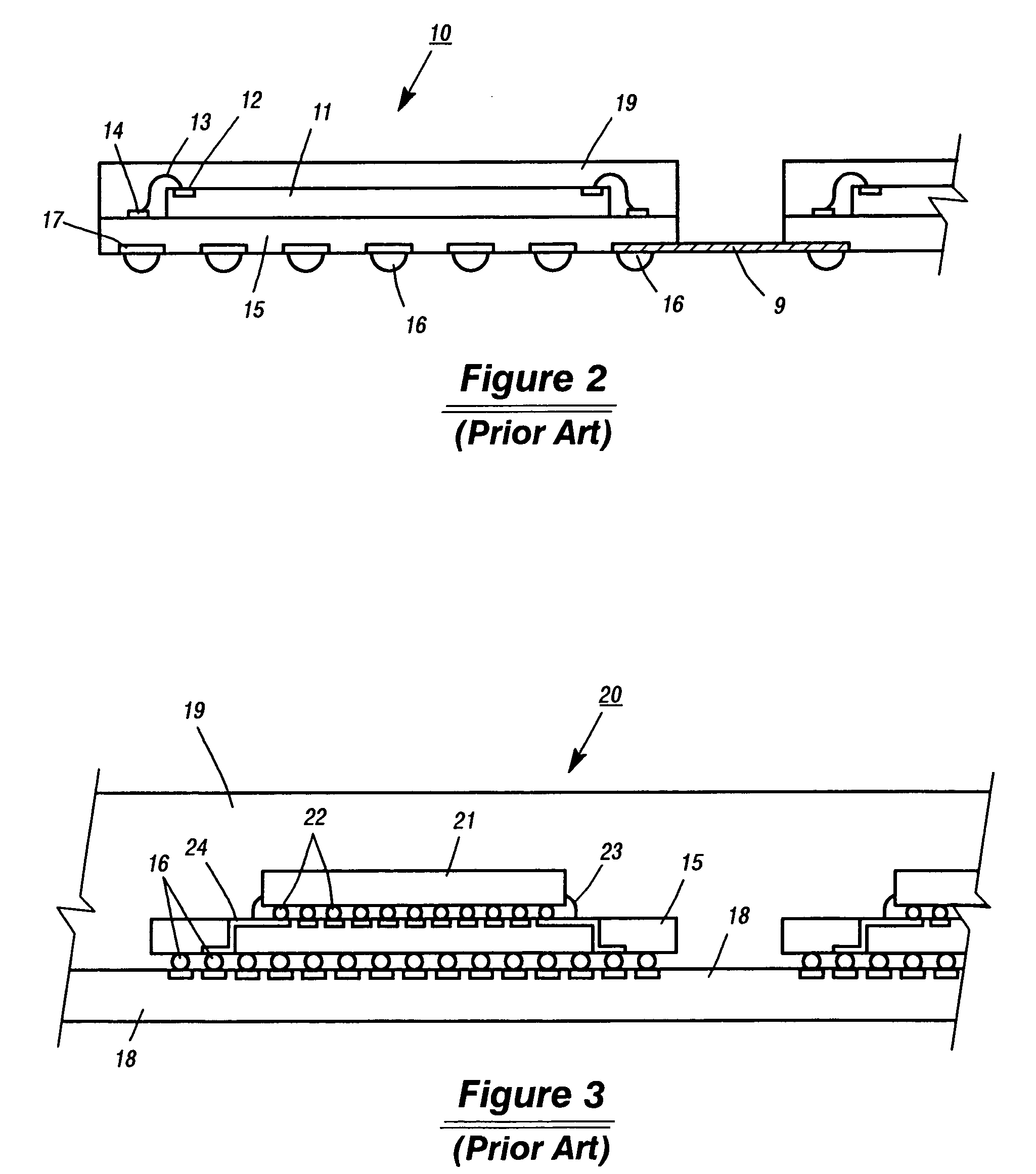Grindable self-cleaning singulation saw blade and method
a self-cleaning, saw blade technology, applied in the direction of manufacturing tools, sawing tools dressing arrangements, other chemical processes, etc., can solve the problems of inability to effectively separate one package from another on some forms of carriers, cost effectiveness, and inability to singulate or separate new high-volume packages
- Summary
- Abstract
- Description
- Claims
- Application Information
AI Technical Summary
Benefits of technology
Problems solved by technology
Method used
Image
Examples
Embodiment Construction
[0035]Refer now to FIG. 1 showing a plan view of semiconductor packages 5 containing die 6 that have been mounted on a common steel lead frame 7 or printed circuit board carrier in an array or matrix 8 ready to be singulated to provide packaged semiconductors (packages) ready for testing and final use. The packages are shown individually encapsulated in plastic. However, the top layer could be a continuous layer of plastic. The plastic is shown removed from the left uppermost die 6 showing wire bonds and / or leads that form part of the packaged semiconductor being singulated.
[0036]Typically the arrays 8 are two and one-half inches to three inches wide and up to ten inches long capable of supporting twelve to one thousand packaged devices. As greater numbers of packages are mounted on a single carrier, the street or distance between devices become more narrow and the saw cut used to singulate the devices becomes more critical. A common copper conductor 9 may be in the street.
[0037]Ref...
PUM
| Property | Measurement | Unit |
|---|---|---|
| thick | aaaaa | aaaaa |
| inside diameter | aaaaa | aaaaa |
| inside diameter | aaaaa | aaaaa |
Abstract
Description
Claims
Application Information
 Login to View More
Login to View More - R&D
- Intellectual Property
- Life Sciences
- Materials
- Tech Scout
- Unparalleled Data Quality
- Higher Quality Content
- 60% Fewer Hallucinations
Browse by: Latest US Patents, China's latest patents, Technical Efficacy Thesaurus, Application Domain, Technology Topic, Popular Technical Reports.
© 2025 PatSnap. All rights reserved.Legal|Privacy policy|Modern Slavery Act Transparency Statement|Sitemap|About US| Contact US: help@patsnap.com



